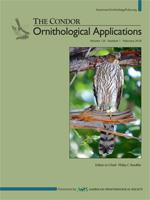Land use restrictions imposed by the Endangered Species Act may create conflict, affecting conservation on private lands. In 1995, the Safe Harbor program (hereafter, ‘Safe Harbor’) was initiated to alleviate concerns of private landowners about conservation of imperiled species. The inaugural program targeted endangered Red-cockaded Woodpeckers (Picoides borealis; hereafter, ‘RCW') in the North Carolina Sandhills, USA. Landowners enrolled in the Safe Harbor select management actions to enhance habitat for existing populations, but incur no additional responsibilities for increases in populations. Despite the relevance for conservation, the benefits of Safe Harbor remain largely unknown. Here, we evaluate the effects of Safe Harbor on RCWs in the North Carolina Sandhills. Between 1980 and 2014, we monitored 55 RCW territories (30 Safe Harbor, 25 control). Following the initiation of Safe Harbor, the probability of territory abandonment on control properties increased by ∼14% over a 19-yr period, while it remained constant on Safe Harbor properties. This could have been due to more Safe Harbor properties (87%) than control properties (68%) receiving artificial cavities that offset cavity losses. Following the initiation of Safe Harbor, the laying date on Safe Harbor properties advanced 16.1 days over a 19-yr period, compared with 11.6 days on control properties. Enrollment in Safe Harbor was not related to other measures of breeding performance, likely due to variation in habitat management across properties. While Safe Harbor clearly alleviates conflict over conservation, other effects depend on management actions. We encourage evaluations of existing similar programs to determine their efficacy.
How to translate text using browser tools
24 January 2018
How effective is the Safe Harbor program for the conservation of Red-cockaded Woodpeckers?
Jennifer A. Smith,
Kerry Brust,
James Skelton,
Jeffrey R. Walters

The Condor
Vol. 120 • No. 1
February 2018
Vol. 120 • No. 1
February 2018
breeding biology
Endangered Species Act
habitat management
incentive program
Picoides borealis
reproduction




